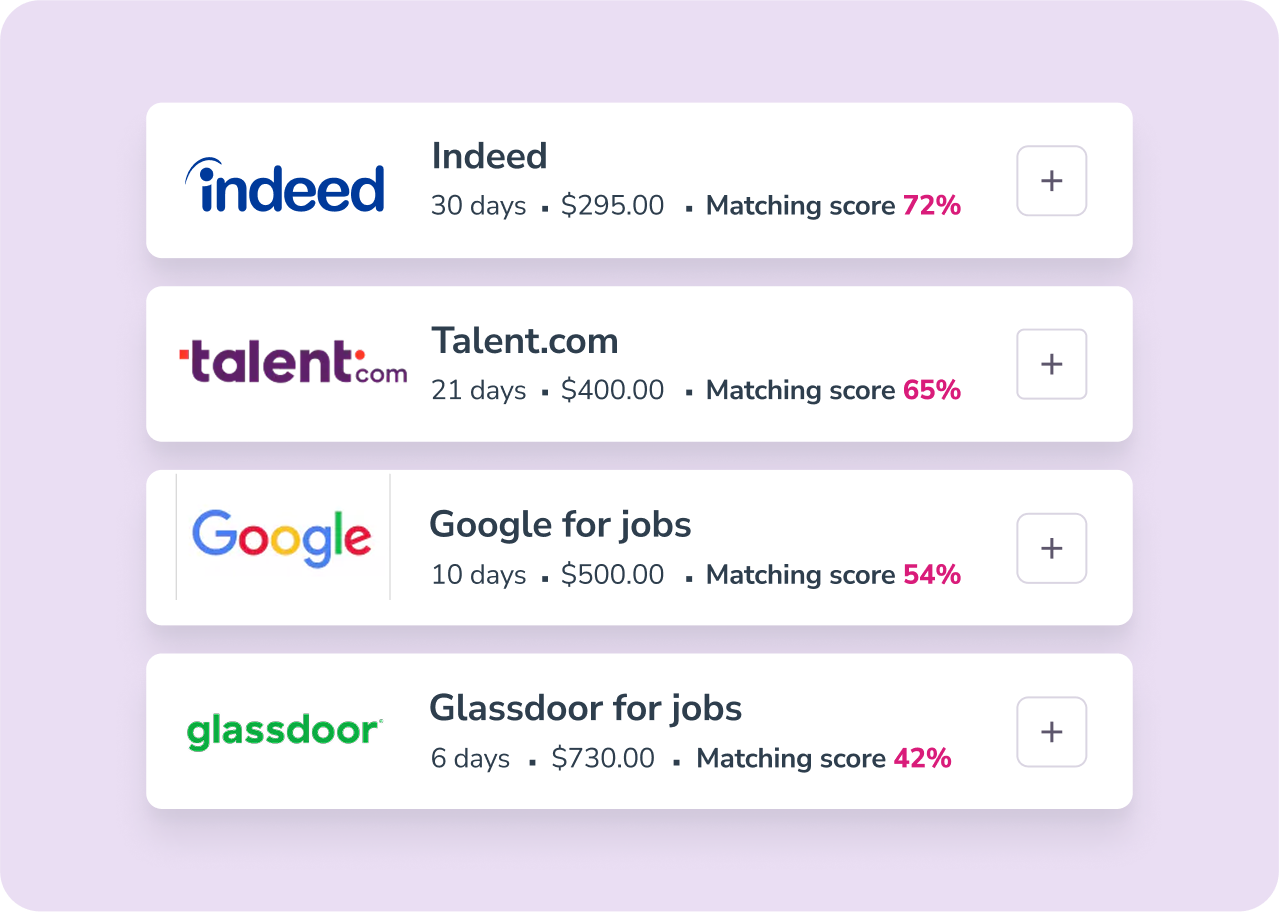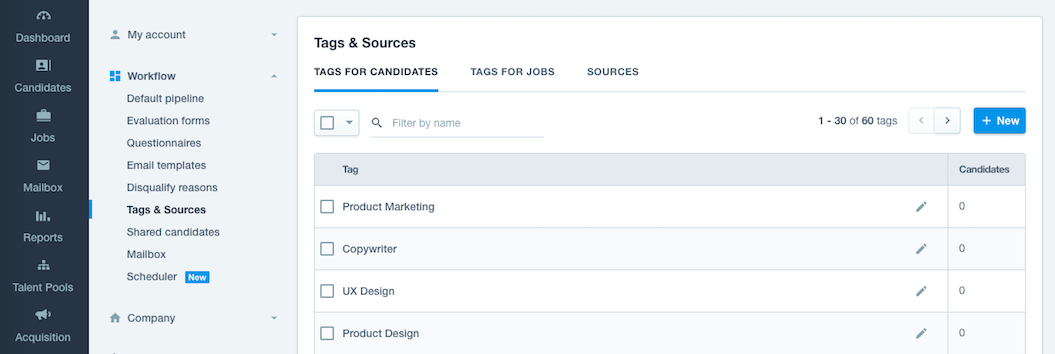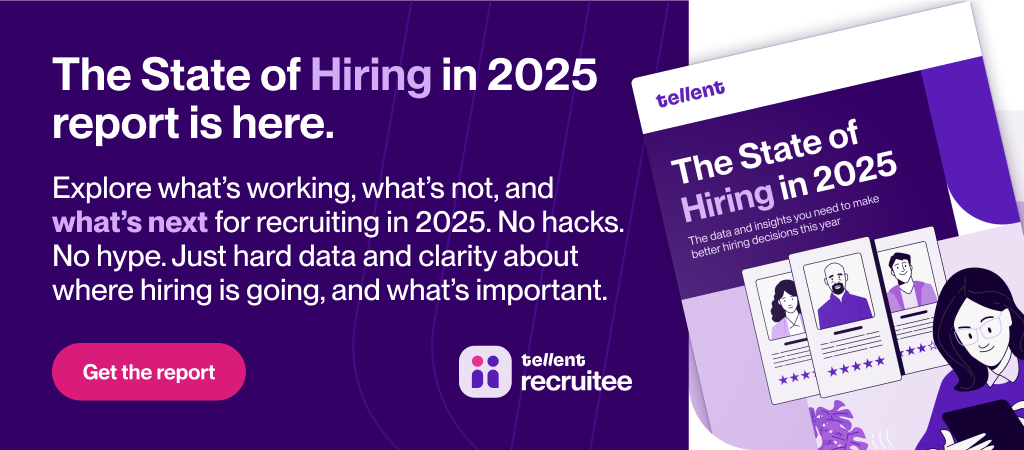Hiring has only gotten more competitive. You post a role and either hear crickets, or you’re overwhelmed with hundreds of barely relevant resumes. For companies trying to compete with bigger players, it’s increasingly hard to keep up. Creating and maintaining a high-calibre candidate pool can help ease this shock in both directions.
A candidate pool is a curated database of potential candidates interested in your company or roles, which you can tap into when vacancies arise. This proactive recruitment approach means you’re not starting from scratch every time you hire. You already have a bench of engaged talent.
In this article, we’ll explain what a candidate pool is, how to build one from scratch, and how to manage it effectively. We’ll also explore findings from original data and research performed by the Tellent Recruitee team, which will help to show why candidate pools are more critical than ever.
Ready to future-proof your hiring? Let’s start with a definition so we’re on the same page.
What is a candidate pool?
A candidate pool is a group of pre-identified, potential candidates who are considered a good fit for future job openings at your company.
You might also hear terms like applicant pool and talent pool used. They’re similar, but here’s how they differ:
- Applicant pool refers to all individuals who apply for a specific job. It’s about volume and includes both qualified and unqualified applicants.
- Candidate pool can mean the shortlist of top applicants for a role, or more broadly, any group of viable candidates for current or future jobs.
- Talent pool typically refers to a broader, long-term database of high-potential candidates It includes passive talent, former applicants, and sourced leads.
In modern recruitment, candidate pool and talent pool are often used interchangeably. For this article, we’ll treat them as the same: a curated collection of individuals who could be great hires down the line.
For example, your talent pool might include developers you met at a meetup, past applicants who nearly made it, and standout profiles sourced via LinkedIn—all stored in your ATS, ready when the right role opens.
A well-maintained pool helps you hire faster and smarter, which we’ll explore next.
Why candidate pools matter in 2025
Think of a candidate pool as your hiring safety net, or your secret weapon.
Speed is critical. According to Tellent Recruitee’s own ‘State of Hiring in 2025’ report, large companies now fill roles in around 28 days, while small businesses take 36.5 days on average. And when hiring stretches past 40 days, candidate drop-off rates shoot up by 12%.
With a well-maintained pool, you don’t have to start from scratch—you already have quality candidates on file, ready to move. This dramatically speeds up hiring timelines, ensuring that you can snatch up top talent before it goes off the market.
Candidate pools also enable better quality and fit. Building relationships with potential hires before roles open means you’re not making “panic hires.” You’ve taken time to understand who they are and why they’d thrive at your company. Both great things to know when hiring mission critical employees to your team.
And with ongoing talent shortages in many European sectors, particularly tech, the smartest companies are always recruiting. Candidate pools let you engage passive talent, increase diversity, and stay flexible in changing markets.
In short, a candidate pool helps you hire faster, smarter, and more inclusively—a winning combination.
Building a candidate pool: steps and strategies
Creating a strong candidate pool is an ongoing strategy, not a one time project. The goal is to proactively attract, source, and organize candidates before the roles open, so you’re never hiring from zero. Think of it as the foundation of your talent pipeline.
Here’s how to build one effectively:
1. Craft targeted job posts and focus on employer branding
Struggling with a small candidate pool? It might come down to the basics: unclear job ads or weak branding. A vague job description attracts the wrong people (or no one at all).
Start by being specific. Highlight the must-have skills, include deal-breakers, and offer a realistic glimpse of your company culture. In 2025, salary transparency and flexible work options are top priorities for candidates. Including these in your listings can significantly boost application rates.
And don’t forget your careers page. According to our hiring report, companies with engaging pages (which translates to longer visit times) attract more qualified applicants. Tools like Tellent Recruitee’s CareersHub help you create compelling, branded job pages quickly, with all the information candidates care about.
2. Promote jobs on the right channels
A great job post is useless if no one sees it. Avoid the “post and pray” approach by distributing your openings across multiple, targeted channels. Niche job boards, LinkedIn groups, Slack communities, and even Reddit forums can yield great talent if they match your role type.
Using job distribution tools or integrations (like Tellent Recruitee’s multi-posting and smart campaigns tools) can ensure your job ads get in front of the right audience, and help avoid a meager applicant pool caused by poor visibility.

3. Use sourcing and referrals to expand the candidate pool
Don’t wait for candidates to come to you. Great talent pooling strategies involve sourcing passive candidates. Search LinkedIn for profiles that match your future needs, tap into alumni networks, or attend virtual events where talent hangs out. For junior roles, consider university outreach or hackathons.
Encourage employee referrals. They often bring in high-fit candidates faster. And whenever you come across a promising profile, add it to your pool.
4. Screen and organize incoming candidates
Once candidates start flowing into your system—whether through job ads or proactive sourcing—it’s essential to filter and organize them efficiently. Without the right screening steps, even a well-promoted role can lead to hours wasted reviewing unqualified applications.
Use knockout questions, custom screening fields, or short assessments early in the application process to identify top-tier candidates. This helps reduce noise and ensures only the most relevant profiles make it into your pool.
Once screened, organize candidates by tagging them according to criteria that matter to your hiring needs: role type, skill set, experience level, or location. A well-tagged pool is searchable, actionable, and ready when hiring picks up. This turns your ATS into a true strategic asset.
5. Engage and nurture from day one
A candidate pool is a living network that you can use today, and for future roles. Treat it that way. Acknowledge applications, send thank-you notes, and keep communication open. Even a short automated message helps candidates feel valued. This also sets the tone for future engagement.
Now that you have a pool of great candidates, what’s next? You need to keep them interested. That’s where managing your candidate pool comes in—and we’ll cover that in the next section.
Managing and nurturing your candidate pool
Building a candidate pool is only the start of the battle. To reap the benefits, you need a strong engagement and nurturing strategy in place. This starts with effective candidate pool management.
Here are the best practices.
Maintain regular communication
No one likes a one-sided relationship. That’s no different with candidates and employers. Don’t reach out to candidates in your pool only when you have a job to fill. Instead, nurture your talent pool like a community.
Candidates crave transparency, updates, and connection with potential employers. They want to be remembered, and they want to feel valued. Regular touchpoints with your candidate pool can go a long way to delivering this.
Think quarterly newsletters, company announcements, hiring event invites, or even simple check-ins. A holiday greeting or a personalized email with a relevant job opportunity shows you’re paying attention.
Even passive candidates—those not actively looking—appreciate being kept in the loop. As Denise Loschek from the State of Hiring in 2025 advised, keep candidates informed about where they stand and what the hiring journey looks like. That might mean outlining upcoming roles or ensuring real people are reachable for questions. A little consistency builds long-term interest—and loyalty.
“To improve the candidate journey, we focus on clear communication, quick feedback and a transparent selection process. In this way, we achieve recruiting processes that are efficient and at the same time appreciative for both hiring managers and candidates.” — Denise Loschek, Head of HR @ RSM Austria
Segment and organize the candidate pool
A large pool is only useful if it’s organized. Effective candidate pool management means no profile gets lost in a black hole.
Segment candidates by job type, skill set, seniority, or geography. For instance, if you need a Sales Manager in the Netherlands, just filter your pool by ‘Sales’ + ‘Netherlands’ and you’ve got a tailored shortlist ready.”
Tellent Recruitee’s tagging and search features make this seamless. Tag candidates with labels like #Marketing, Skill: Python, or Location: Benelux, and keep different “Talent Pools” by role or function. Team members can follow specific pools, leave notes, or assign owners, ensuring collaboration and no missed connections.

This level of organization turns your database into a strategic advantage, and can drastically speed up time-to-hire.
Use automation to manage efficiently at scale
Managing a growing pool doesn’t need to eat your entire week. Automation can make the difference.
For example, set up a simple workflow so new talent pool additions receive a welcome message automatically. Use your ATS to send nudges when a pool candidate applies to a new role, or to flag top talent who hasn’t been contacted in months.
Recruitee supports these types of actions, enabling recruiters to trigger emails, status changes, or internal alerts based on candidate behavior. All of this helps you stay proactive without the manual overhead.
For smaller teams, even a calendar reminder to check in with high-priority candidates quarterly can be a game-changer.
Audit and update candidate pools regularly
Your candidate pool isn’t static. It should evolve as your needs change and your company grows. Schedule a check-in every six to 12 months to update profiles, remove outdated contacts, and re-engage promising leads. This keeps your pool relevant and lean.
Make sure you track success too. Are hires actually coming from your pool? If not, tweak your strategy. Globally, more mid-sized companies are seeing hires from talent databases rise year over year – showing the value of building and maintaining one.
And finally, don’t forget compliance. For EU-based companies, GDPR applies: ensure you have permission to retain and contact candidates over time.
A fresh, compliant, well-managed pool is your best asset in a competitive hiring market.
Take a proactive approach to hiring with candidate pools
When talent becomes more competitive, a candidate pool goes from a nice-to-have to an essential tool in your toolbox. With hiring cycles tightening, and top talent disappearing fast, having a ready-to-go pipeline means you can move quickly and make better hiring decisions.
Tellent Recruitee’s ‘State of Hiring in 2025’ report found that the most successful companies are hiring within 28 to 37 days. Beyond that point, drop-off rates spike by 12%. This means acting fast is critical to landing the right hire. An active and vetted candidate pool puts you one giant step ahead of the curve each time you need to fill a new position.
If you haven’t built a candidate pool yet, now is the time. Chances are, your next great hire is already waiting. You just have to keep them engaged (and ensure your processes are GDPR-compliant).





.jpg?width=1000&name=6797cc6580ed37f294dde1be_pexels-linkedin-sales-navigator-7245806%20(1).jpg)
.jpg?width=1000&name=66dad3650c3628c4aac87a68_top-view-of-note-with-light-bulb-drawing-and-crump-2021-08-31-14-50-01-utc%20(3).jpg)


